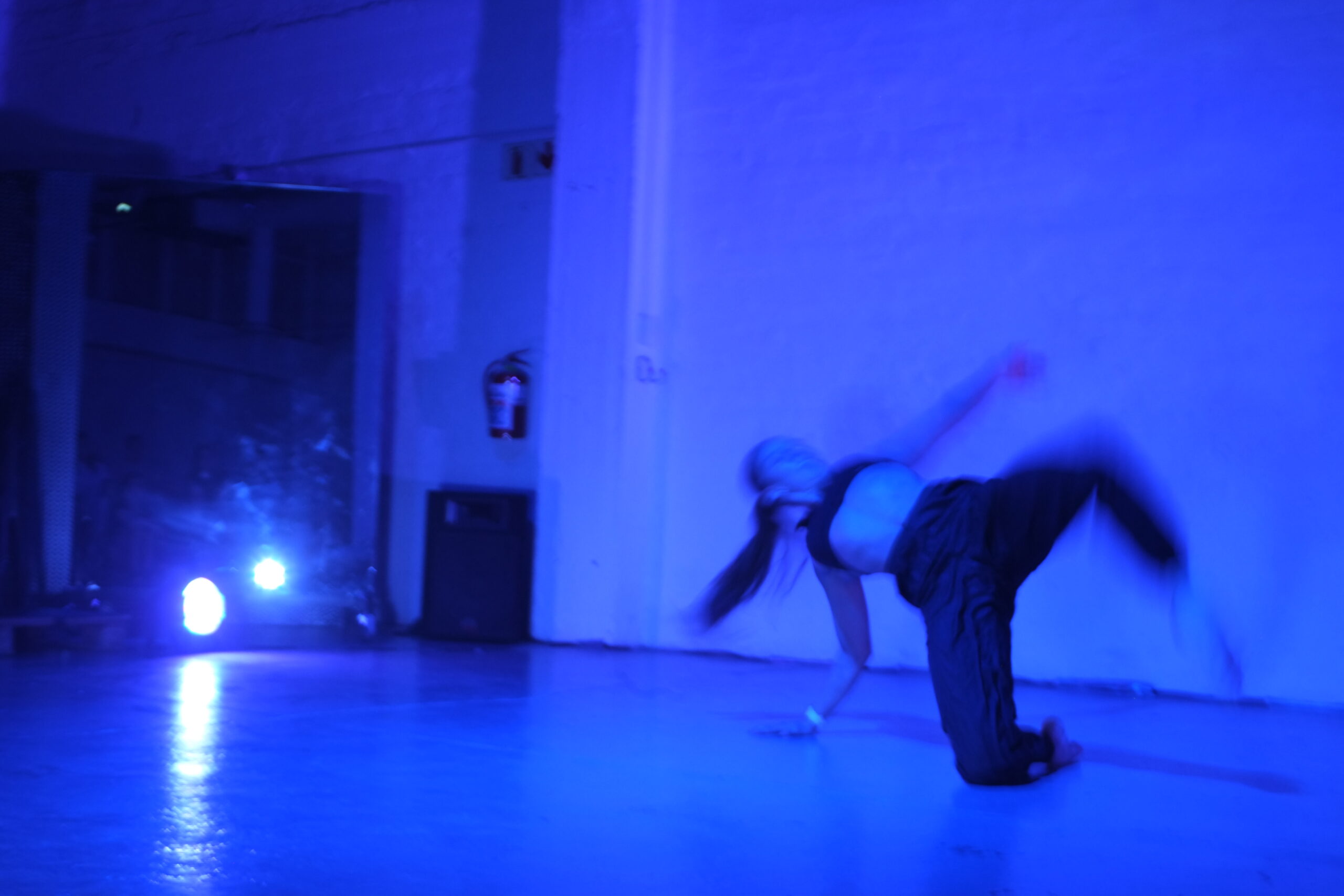”
Written byNatalie Fraser
Taking improvisation from the Rehearsal Room to Centre Stage with the Performance Event demystifying the art of Improv Dance.
Would You Walk Into The Room? is the question posed and the invitation extended by a unique dance performance that recently had its second instalment in Cape Town. The event was initially organised by Capetonian-based dancer, Bethany McLachlan-Evans, as part of her masters research. It has since developed into a much-anticipated feature of The Outlore Base’s calendar as well as an important fundraiser for the anti-GBV NPO I Hear You. Improvised dance is a style that doesn’t always draw a crowd. For many outside the dance world, the term conjures up memories of watching a confusing avant-garde performance that has manifested in a fear of live performance and feeling cringe.
For those inside the dance world, improv is often seen as something that begins and ends in the rehearsal room, a means to an end in the choreographic process. These misconceptions are reinforced by virtue of the fact that there are very few spaces for the form to be performed and engaged with. Would You Walk Into The Room? looks to shift these long-held perceptions and open the door for dancers and audience members alike to experiment and explore improvised dance in a new way.
“Would You Walk Into The Room? looks to shift these long-held perceptions and open the door for dancers and audience members alike to experiment and explore improvised dance in a new way.”
McLachlan-Evans’ own introduction to improv came as a means to an end—a solution to competition stage fright. “I’d always forget a section of my dance,” she says. “I would end up improvising, to the point where my teacher said ‘We’re going to teach you how to improv instead of telling you what you’re doing is wrong.’” At 17, she attended her first workshop and fell in love with the form. “It was this light-bulb moment for me. There was this whole other sphere of dancing that it opened the door to.”
This passion led her to the University of Cape Town’s Centre for Theatre, Dance & Performance Studies, where she is currently completing her masters, focusing on the relationship between dance improvisation and visual imagery. The purpose of the first Would You Walk Into The Room was to put research into practice and showcase improvisation as a final product instead of just a starting point.
“I was a bit sick and tired of it being this second thought,” McLachlan-Evans says. “Or something that people think you either can or can’t do when it’s actually a full blown technique. People train and spend as much time as you would learning any dance style.” If there is one thing that the event has revealed, it is how many highly trained improv dancers are waiting in the wings, rarely getting the chance to put their skill centre stage.
Would You Walk Into The Room? not only brings the performers to the stage but also brings performers together to foster collaboration and a deeper connection to the work, each other and the audience. The audience members, the space and the dancers are all a part of creating the final product.
“Would You Walk Into The Room? not only brings the performers to the stage but also brings performers together to foster collaboration and a deeper connection to the work, each other and the audience. The audience members, the space and the dancers are all a part of creating the final product.”
The performance space is casually demarcated by the audience, who gather around the dancers, à la a Step Up dance circle, standing and sitting wherever they can find a spot. Gasps, claps, snaps and cheers guide the performers just as much as the audiovisual prompts. Audience members are invited to arrive and leave when they want, move around the space throughout the performance and even take the stage if feeling brave enough. It almost seems like an impromptu gathering than you just happened to stumble across and can watch unfold with no expectations.
“You don’t really think about the conclusion,” says McLachlan-Evans. “It’s not necessarily to have an end or reach a pivotal point. The point is just to resonate, to connect.” This departure from the traditional structure of a performance, one with a clear agenda and division between audience and performer, imbues the event with a truly unique level of intimacy.
The worsening statistics of GBV across South Africa threatens the stability of our communities and our ability to connect with one another. All tickets sales are donated to I Hear You, an organisation that gives a voice to victims of GBV and encourages much needed engagement with the epidemic
McLachlan-Evans’ hopes for the project were to demystify improv dance as well as to extend its core message, that of community, collaboration and connection, beyond a single evening. She has undoubtedly achieved this, not only by creating a platform from improv dancers but also through its charitable contributions.





